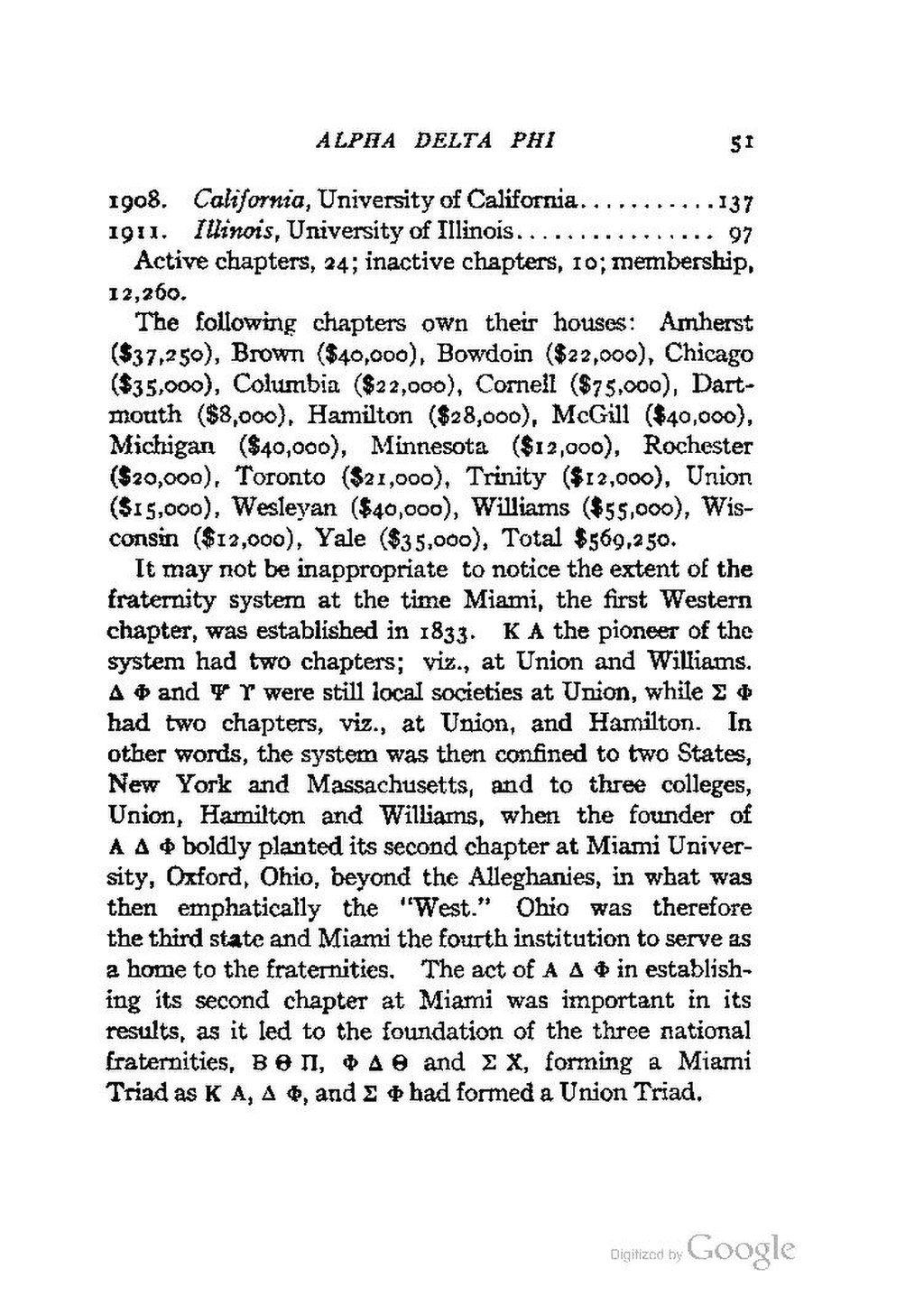| 1908. California, University of California | 137 | |
| 1911. Illinois, University of Illinois | 97 | |
Active chapters, 24; inactive chapters, 10; membership, 12,260.
The following chapters own their houses: Amherst ($37,250), Brown ($40,000), Bowdoin ($22,000), Chicago ($35,000), Columbia ($22,000), Cornell ($75,000), Dartmouth ($8,000), Hamilton ($28,000), McGill ($40,000), Michigan ($40,000), Minnesota ($12,000), Rochester ($20,000), Toronto ($21,000), Trinity ($12,000), Union ($15,000), Wesleyan ($40,000), Williams ($55,000), Wisconsin ($12,000), Yale ($35,000), Total $569,250.
It may not be inappropriate to notice the extent of the fraternity system at the time Miami, the first Western chapter, was established in 1833. ΚΑ the pioneer of the system had two chapters; viz., at Union and Williams. ΔΦ and ΨΥ were still local societies at Union, while ΣΦ had two chapters, viz., at Union, and Hamilton. In other words, the system was then confined to two States, New York and Massachusetts, and to three colleges, Union, Hamilton and Williams, when the founder of ΑΔΦ boldly planted its second chapter at Miami University, Oxford, Ohio, beyond the Alleghanies, in what was then emphatically the "West." Ohio was therefore the third state and Miami the fourth institution to serve as a home to the fraternities. The act of ΑΔΦ in establishing its second chapter at Miami was important in its results , as it led to the foundation of the three national fraternities, ΒΘΠ, ΦΔΘ and ΣΧ, forming a Miami Triad as ΚΑ, ΔΦ, and ΣΦ had formed a Union Triad.
